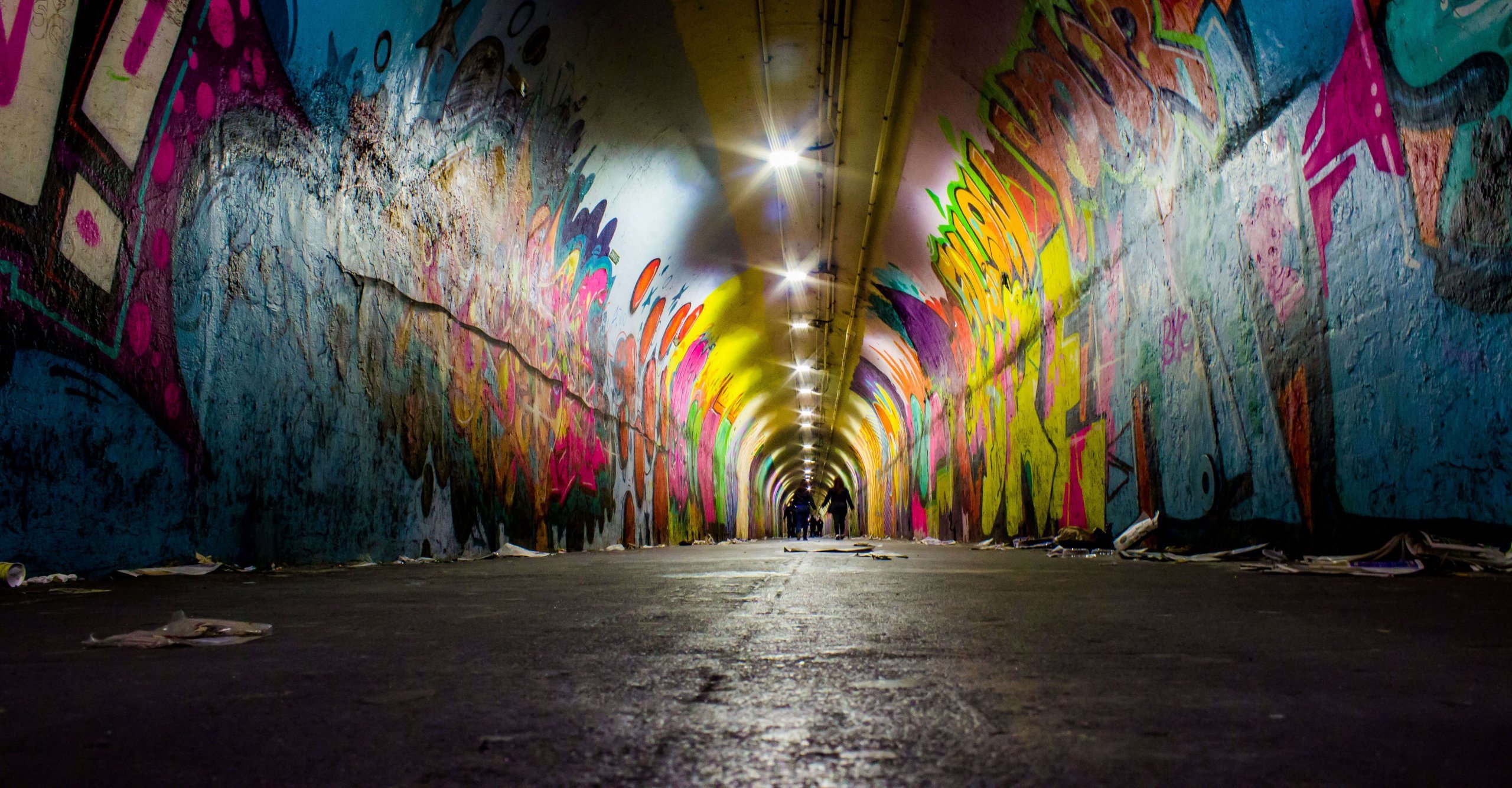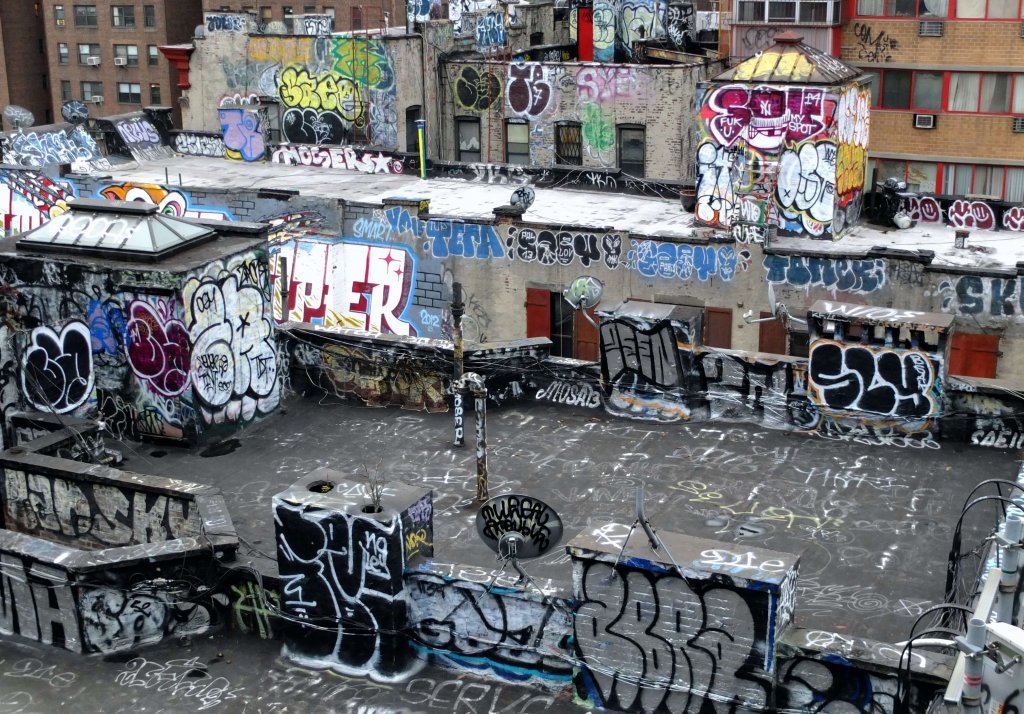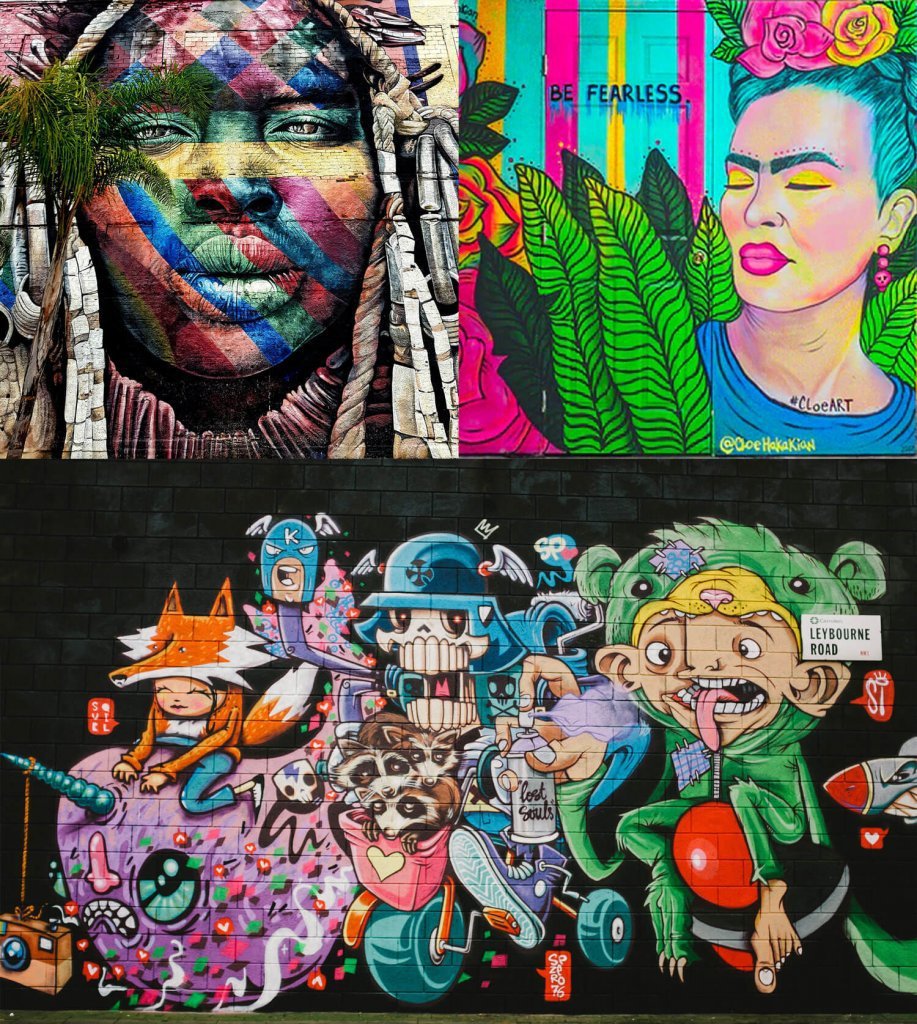What Is Classed As Graffiti?
- Modern day graffiti
- Anti-social behaviour
- Different types of graffiti
- Is graffiti bad for business?
- A summary of graffiti

What is Graffiti?
Before we dive into the realm of graffiti, we need first to understand the origin of the word. The etymology of “Graffiti” is derived from the Latin word “Graphium”, which ultimately means “to write or to scratch”. If you thought graffiti was this modern phenomenon, then think again, graffiti has been around for centuries.
Since the moment people learnt to write, and surfaces were available to scribble on, various forms of graffiti have appeared on everything from commercial buildings, to properties, sculptures, landmarks, vehicles and much more.
The use of graffiti has changed over the years; from first being used to communicate to one another through symbols, to a way for “hobo’s” to speak without the police catching on. Now in the present day, graffiti plays a significant role in today’s world, allowing individuals to visually express both their view and opinions in public spaces such as office buildings, trains etc.
Very often, the words or images being created are to share opposing arguments against the government and the ways certain situations have or are being handled. Graffiti today, covers a broader spectrum, it has become an anonymous tool that allows everyone and anyone to express themselves in a way that they feel fits; from personal expression to gang members visually “tagging” the areas in which they are present, voices of social change, expressions of community desire or protesting against the local community or government.
Modern Day Graffiti
Graffiti has gained a high amount of traction in the past decade with more people visually expressing their views on public property, in what they believe is a creative art form. One of the most significant graffiti movements came from Banksy. “His work often engages political themes, satirically critiquing war, capitalism, hypocrisy and greed.”
He has become one of the world’s famous graffiti artists whose identity is still unknown. While his work is stunning and it is never used to negatively offend the wider public, what he does is still breaking the law and if ever caught, will face hefty fines and possible imprisonment.
Graffiti in the modern day is described as the unauthorised or illegal defacement of property. Typically, this is created by markings with symbols, words and occasionally images using anything from permanent pens to aerosol paints and knives to etch into windows. In many cities around the UK, graffiti has become the very visual that is associated with communities that are out of control, decaying and a dangerous place to be, and is therefore unfortunately outlawed.
Once negative forms of graffiti start to mount up in cities, it doesn’t take long for anti-social behaviour to arise with it. The negative attraction encourages more behaviour like this which very quickly turns a small, quiet community into an area everyone knows to avoid. Residents will begin to move home; housing prices drop, which encourages more anti-social behaviour to commence. Graffiti is used to attract potential perpetrators.
In the eyes of the government and local authorities, any form of graffiti is classed as a complete nuisance to the community. Anyone caught in the act of graffitiing can not only be fined but can also be jailed. Graffiti removal can be an expensive job depending on the size of the surface areas and the type of substance that has been used. Resulting in homeowners, business owners, and the local authorities have to pay a hefty amount of money to get the area cleaned up and sprayed with anti-graffiti paint.

For a variety of people, graffiti is just a way for them to release all the thoughts going on in their head. Many people struggle to communicate or don’t feel heard and therefore see a massive brick wall or an office building as an empty canvas for their graffiti artwork.
Anti-social Behaviour
Graffiti in all essence is against the law and classed as criminal damage, no matter whether it is viewed as street art and is a beautiful masterpiece; if it is on public or private property, it is still breaking the law. Graffiti has been used to racially intimidate people all over the nation, by spray painting or etching racist or highly offensive words and imagery on cars, pavements, trees, building walls, tunnels, railways and more. While graffiti can have some positive impacts on the community, the majority of individuals who graffiti are creating a hostile environment.
Different Types Of Graffiti
There are a variety of graffiti types that get spray-painted or etched on to public and private property throughout the nation. While some graffiti can be enjoyable to look at there is a massive difference between incoherent graffiti markings such as gang tags, and graffiti that has been complete as a mural to someone. Below, we have explored the various graffiti types there are;
Tagging
Tagging, a popular form of graffiti used by gang members to visually show that they have either been in a location or are currently occupying the area. “Gangs use graffiti to mark their territory, mourn fallen members and challenge rival gangs”. You can often find visuals of tagging in popular public areas such as the top of bridges, trains, busses and at shopping centres.
Tagging is meant to be noticed by everyone that passes the area, in one form, it is a way for a person to say I’m here and I’m here to be noticed. This results in many individuals hurting themselves by taking tagging graffiti skills to the next level, by either going to new heights or dangerous areas such as railways. The more dangerous the space, the more you are getting your name “tag” out there for others to see.

Tagging is an extremely unsightly visual; it creates an uncomfortable atmosphere for all residents. It is a sign of trouble, the more tagging that appears, the more gang members are coming to the area. There is a significant correlation between the level of tagging within the area and the amount of anti-social behaviour that occurs.
Vandalism
To many people, graffiti will always be viewed as vandalism. No matter whether the graffiti is a beautiful image, it is still breaking the law and should permanently be removed immediately.
One of the worst forms of vandalism is a process called etching. The etching is viewed as a form of graffiti; typically used to scratch a visual of a gang tag into a hard surface, unlike graffiti, which is created by using arousal paints and can easily be removed by a professional.
The etching is not so easy to remove, it is achieved by using a sharp object such as a knife or key to permanently damage the surface by scratching words, symbols or images. Unfortunately, the results of etching will ultimately damage the entire surface, which means it would need replacing.
Street Art
Street art, commonly known as graffiti’s formal cousin. Any individual who creates graffiti that is viewed as street art will have a strong presence in the profession of graphic design or fine art. Visually street art can be quite pleasing to look at; it is never created to offend or hurt anyone in public but merely a show of their talents.

Very often, a street artist can be recognised by professional designers which kicks off their very own design career. This can lead to the street artists being given the opportunity to work in a studio with other professionals and hold legal gallery exhibitions of their work. These types of graffiti artists simply enjoy the freedom of having the ability to create visually exciting masterpieces.
Political
Political graffiti is becoming ever more popular; it is the public way to express their view on current situations when they feel as though their voices are not being heard or purposely ignored by the government. Graffiti allows you to communicate your opinions anonymously visually. For example, Banksy is known to express themselves from their point on political movements.
However, political graffiti can cause quite a disturbance within a community, especially if the person’s view doesn’t suit the majority of opinions. This can lead to a graffiti fight, where both parties take it upon themselves to cover the community in their view.
Racism is still sadly part of our community, and regularly opinions on this matter are visually shared, both positive and negative. This can lead to the community being on edge as they are now aware that there is someone nearby that takes offence to their skin colour, religion or way of life. This is known to lead to many people feeling on edge, increasing anti-social behaviour.
Free Walls
Free walls are areas that the communities have set up to allow people to graffiti as much as they want without it being illegal. London’s South Bank has an enormous canvas that allows recognised artists such as Banksy, art students and anyone who feels like spraying some paint around to do it in a legal manner.
Free wall areas in London are covered mainly in “street art” graffiti rather than “gang tags”. These London areas have seen a significant decrease in anti-social behaviour, including graffiti on public property and criminal activity.
Is Graffiti Bad For Business?
Graffiti, if too noticeable around busy city centres, can damage the appearance of buildings, both commercial and residential. First impressions matter, an unsightly structure full of graffiti could be the cause of potential business clients and customers being put off from doing business with you.
Homeowners are less likely to buy a house within an area that has visible graffiti elements. Completely eradicating an area from all forms of graffiti as soon as possible will reduce the risk of any more graffiti appearing and vandals from coming back to the same location.
ICE cleaning has specialist technicians that can safely remove all forms of graffiti from any type of surface. Whether the graffiti is visual on a large- or small-scale surface, we have the industry-leading equipment and techniques to remove instate prevention substances. Give us a call on 0208 066 0360 to speak to one of our support team members.
A Summary Of Graffiti
At the end of the day, graffiti is an illegal activity; if you are caught graffitiing by the police, you can face serious charges no matter your age. At the same time, there are positives to graffiti; however, the negative effects that come along with it highly out the way the good. When graffiti is used in a negative way such as political, tagging or just pure vandalism, it can seriously impact the community, driving away business and making residents of the area feel scared to go out.

Speak with me today,
I’m here to help
By asking you a few questions either via phone or email I can immediately provide a realistic estimation of the cost.
You’re in good company. We’ve cleaned for the following commercial clients… View all

Why choose us?
- Cater to a wide variety of cleaning situations
- Nationwide coverage, available 24/7
- Cater to commercial and domestic clients
- Free survey provided prior to quotation
- Emergency response team
- Offer a bespoke service designed to suit all your needs
- All technicians hold professional health and safety qualifications, including BICSc, IOSH, Dewpoint Professional & Safe Contractor
We’re fully accredited
We place best practise, professional expertise and health and safety at the core of our business. We’re fully compliant with all legal obligations. You can view a list of our accreditations below, or visit our Health & Safety page for more information.











-RGB-small.1707319151.jpg)




















